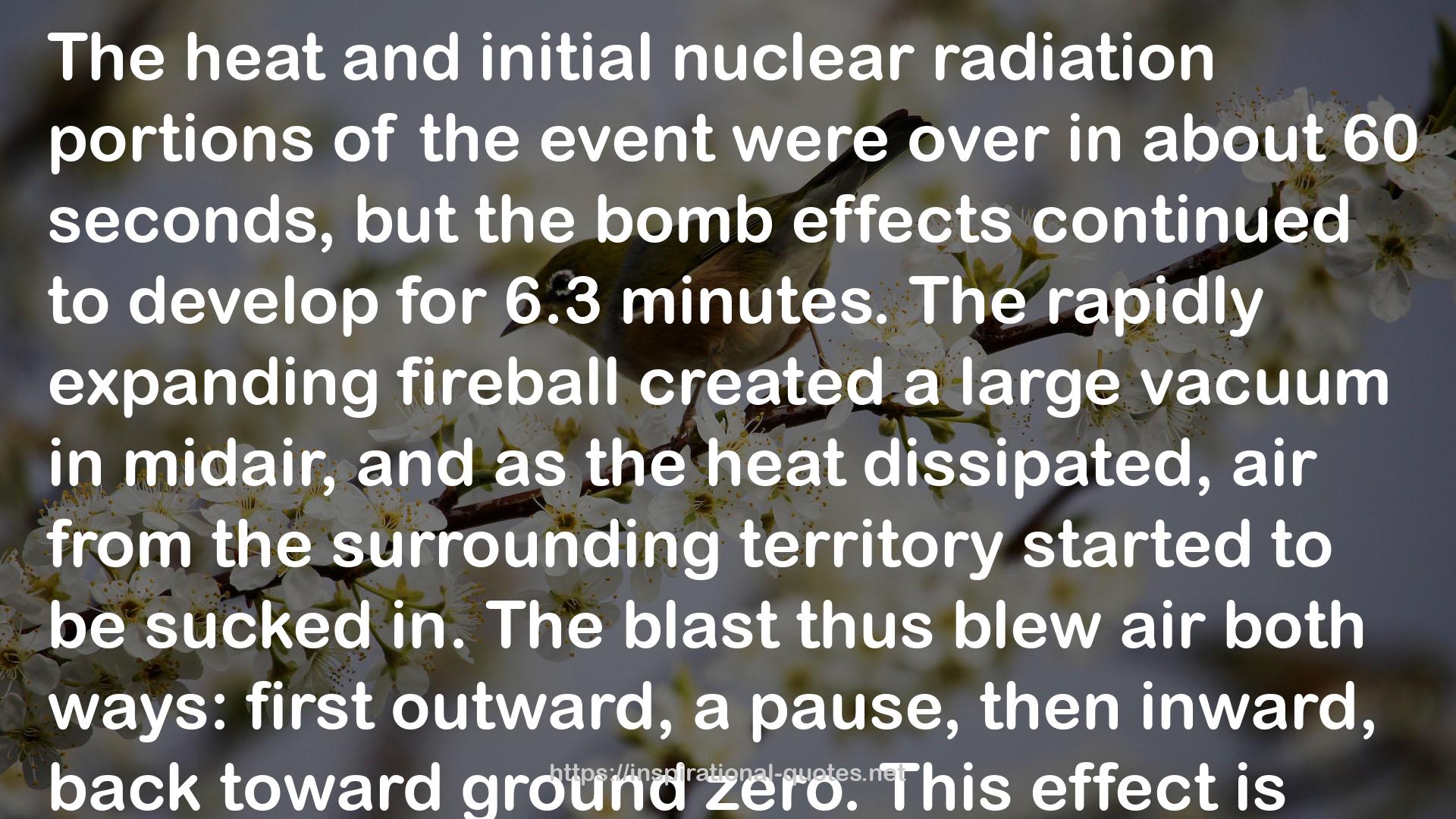" The heat and initial nuclear radiation portions of the event were over in about 60 seconds, but the bomb effects continued to develop for 6.3 minutes. The rapidly expanding fireball created a large vacuum in midair, and as the heat dissipated, air from the surrounding territory started to be sucked in. The blast thus blew air both ways: first outward, a pause, then inward, back toward ground zero. This effect is called the “afterwind.” Meanwhile, the residual heated air rose in a strong updraft, like a hot-air balloon. Solid material on the ground, now pounded to dust, was drawn up into the rising column, making a dirt-cloud. In thirty seconds, the cloud reached a height of three miles. When the ever-rising cloud reached an altitude where its density matched that of the surrounding air, at the base of the stratosphere, the cloud started to spread out horizontally. The sight of this feature became an icon, a dreaded emblem of the atomic age—the mushroom cloud. "
― James Mahaffey , Atomic Accidents: A History of Nuclear Meltdowns and Disasters: From the Ozark Mountains to Fukushima
